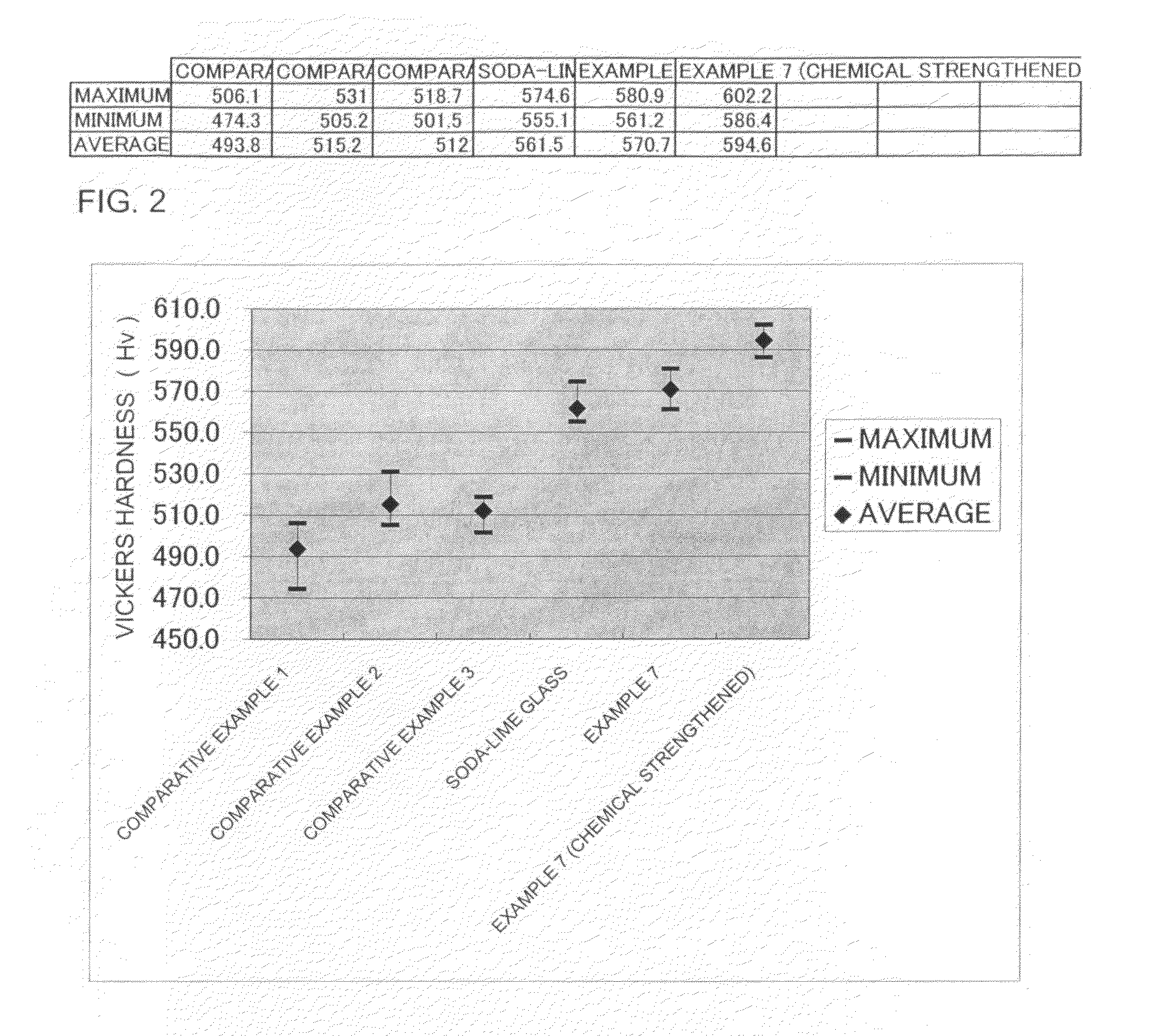Crystal Glass Article
a technology of crystal glass and glass beads, applied in the field of crystal glass beads, can solve the problems of low practical use strength, inability to resist alkali and hence tend to be clouded, and difficulty in physical strengthening portions having small thicknesses by quenching, etc., to achieve high transparence and brightness, reduce environmental load, and weight density
- Summary
- Abstract
- Description
- Claims
- Application Information
AI Technical Summary
Benefits of technology
Problems solved by technology
Method used
Image
Examples
Embodiment Construction
[0103]Table 1 shows glass compositions expressed in weight percent of oxide for Examples of the present invention and Comparative Examples.
[0104]Raw materials were put in a platinum crucible and melted at temperature of 1400 to 1450° C. for 2 to 3 hours in an electric furnace. The molten glass was poured into a stainless steel mold and was cooled to room temperature from annealing temperature in an electric furnace to prepare glass samples for respective measurements.
TABLE 1Example 1Example 2Example 3Example 4Example 5Example 6Example 7Example 8OxideSiO263.8064.2062.0063.2062.2062.9063.2065.00contentNa2O10.8010.0010.0010.8012.0010.3010.8010.90(wt %)K2O8.708.0010.008.708.009.008.708.00Al2O32.002.503.202.003.002.402.002.00CaO3.004.203.003.003.003.003.003.00ZnO6.006.006.506.006.406.007.206.50SrO2.002.002.402.002.003.202.002.00PbOBaOMgOTiO22.602.202.502.603.002.302.602.20SnO20.60ZrO20.60Y2O31.20La2O30.60Nb2O5Sb2O30.400.400.400.400.400.400.400.40PhysicalRefractive index(nD)1.5351.5341.53...
PUM
| Property | Measurement | Unit |
|---|---|---|
| density | aaaaa | aaaaa |
| thickness | aaaaa | aaaaa |
| density | aaaaa | aaaaa |
Abstract
Description
Claims
Application Information
 Login to View More
Login to View More - R&D
- Intellectual Property
- Life Sciences
- Materials
- Tech Scout
- Unparalleled Data Quality
- Higher Quality Content
- 60% Fewer Hallucinations
Browse by: Latest US Patents, China's latest patents, Technical Efficacy Thesaurus, Application Domain, Technology Topic, Popular Technical Reports.
© 2025 PatSnap. All rights reserved.Legal|Privacy policy|Modern Slavery Act Transparency Statement|Sitemap|About US| Contact US: help@patsnap.com



